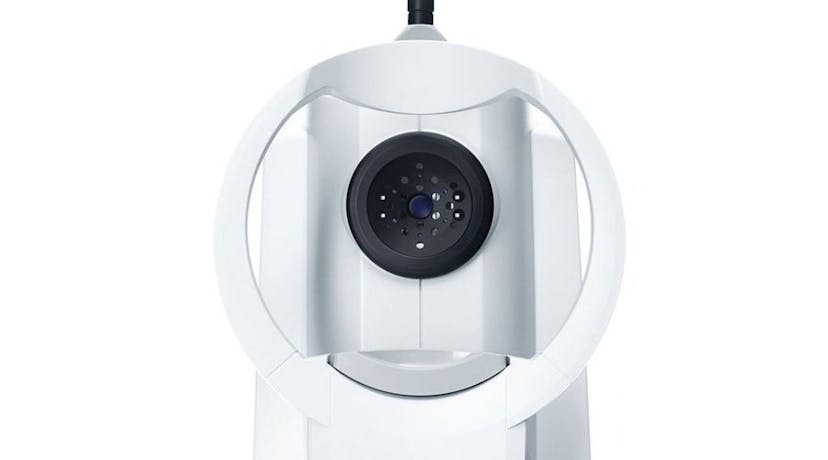
Shining Light On Glaucoma With Cyclodiode Laser Therapy
Glaucoma remains a significant cause of irreversible blindness globally, presenting a profound challenge to ophthalmologists. As the population ages and life expectancy increases, the burden of this sight-threatening condition is expected to escalate. Among the array of treatment modalities available, cyclodiode laser therapy emerges as a promising approach to managing glaucoma, offering potential advantages in certain clinical scenarios. This introduction delves into the evolution of cyclodiode laser treatment and its role in the contemporary management of glaucoma.
History Of Cyclodiode
Cyclodiode laser treatment, a form of transscleral photocoagulation targeting the ciliary body, has evolved over the past few decades as an alternative or adjunctive therapy for glaucoma. Its roots can be traced back to the development of diode lasers in the late 20th century, which revolutionised various ophthalmic procedures due to their precision and efficacy. The application of diode lasers in glaucoma management gained traction in the early 1990s with the recognition of their potential to reduce intraocular pressure (IOP) by ablating the ciliary processes responsible for aqueous humor production. Subsequent refinements in laser technology, coupled with advancements in surgical techniques and a deeper understanding of the pathophysiology of glaucoma, have contributed to the optimisation of cyclodiode laser therapy. Today, it stands as a valuable tool in the armamentarium of glaucoma specialists, offering a minimally invasive approach to IOP control in select cases where traditional treatments may be insufficient or contraindicated.
What Is A Diode Laser?
The diode laser, a cornerstone in modern ophthalmic practice, operates on the principle of selective photothermolysis to achieve targeted tissue effects. Emitting light in the near-infrared spectrum, typically around 810 to 1,470 nanometers, diode lasers possess inherent properties conducive to ocular tissue penetration while minimising scatter and absorption by intervening structures. Upon absorption by melanin-containing tissues within the ciliary body, the laser energy is converted into heat, leading to coagulative necrosis and subsequent reduction in aqueous humor production. This mechanism underpins the efficacy of cyclodiode laser therapy in modulating intraocular pressure (IOP) by ablating the ciliary processes responsible for aqueous humor secretion. Furthermore, the precise control afforded by diode lasers enables clinicians to tailor treatment parameters to individual patient characteristics, optimising therapeutic outcomes whilst minimising collateral damage to adjacent structures. As such, the diode laser represents a cornerstone in the armamentarium of glaucoma specialists, offering a versatile and effective modality for IOP control in the management of this sight-threatening condition.

A Brief Look At Glaucoma
Glaucoma, a prevalent ocular condition in the United Kingdom, encompasses a group of progressive optic neuropathies characterised by damage to the optic nerve and corresponding visual field loss. Often referred to as the "silent thief of sight," glaucoma typically manifests insidiously, with many individuals remaining asymptomatic until advanced stages when irreversible vision impairment has already occurred. Elevated intraocular pressure (IOP) represents a primary risk factor, although other factors such as genetic predisposition, age, and ethnicity also play contributory roles. Left untreated, glaucoma can culminate in severe visual impairment and eventual blindness, posing a considerable public health concern. However, advancements in ophthalmic technology and treatment modalities offer hope in mitigating the impact of this condition. Cyclodiode laser therapy emerges as a valuable tool in the armamentarium of glaucoma management, providing a minimally invasive means to modulate IOP by selectively targeting the ciliary body's aqueous humor production. By ablating the ciliary processes responsible for fluid secretion, cyclodiode laser therapy effectively reduces IOP, thereby halting or slowing the progression of glaucomatous optic neuropathy and preserving visual function in affected individuals. This innovative approach underscores the pivotal role of laser technology in addressing the multifaceted challenges posed by glaucoma, offering patients in the UK and beyond newfound optimism in their battle against this sight-threatening condition.

Case Study: Mrs Smith's Journey With Cyclodiode Laser Therapy
Patient Profile
Mrs Smith, a 65-year-old retired schoolteacher from London, was diagnosed with primary open-angle glaucoma during a routine eye examination. Despite diligent use of topical medications to lower her intraocular pressure (IOP), her condition continued to progress, prompting her ophthalmologist to recommend cyclodiode laser therapy as an adjunctive treatment to better manage her glaucoma.

Expectations
Prior to the procedure, Mrs. Smith expressed apprehension about undergoing laser treatment. She had concerns about potential discomfort during the procedure and uncertain outcomes. However, after thorough discussions with her ophthalmologist and learning about the potential benefits of cyclodiode laser therapy, including reduced reliance on eye drops and preservation of her remaining vision, Mrs. Smith felt optimistic about the procedure's potential to improve her quality of life.
Procedure And Outcome
Under local anaesthesia, Mrs Smith underwent cyclodiode laser therapy, during which precise laser energy was delivered to the ciliary body to reduce aqueous humor production and lower IOP. The procedure was well-tolerated, with minimal discomfort reported by Mrs. Smith. Following the treatment, she experienced a gradual decrease in her IOP over the ensuing weeks. Subsequent follow-up appointments revealed stable optic nerve function and halted the progression of her glaucoma. Mrs. Smith's dependence on topical glaucoma medications decreased, contributing to improved ocular comfort and adherence to her treatment regimen. Moreover, her quality of life improved as she regained confidence in her ability to manage her glaucoma effectively.
Patient Statement
"I was initially hesitant about undergoing cyclodiode laser therapy, but I am grateful that I did. The procedure was much more comfortable than I anticipated, and the results have exceeded my expectations. Not only has my intraocular pressure decreased, but I also feel more in control of my glaucoma management. I no longer worry about missing doses of eye drops or experiencing their side effects. Cyclodiode laser therapy has truly improved my quality of life, and I am thankful for the expertise and care provided by my ophthalmologist throughout this journey."

Laser Doppler imaging reveals arterial blood flow reversal in neovascular glaucoma. The colour change of the Doppler image in the central retinal artery during the cardiac cycle indicates arterial flow reversal.
Comparison With Other Treatment Modalities
| Treatment Modality | Key Features | Advantages | Considerations |
|---|---|---|---|
| Cyclodiode Laser Therapy |
|
|
|
| Medications (Eye Drops) |
|
|
|
| Traditional Laser Therapy (e.g., Argon Laser Trabeculoplasty) |
|
|
|
| Surgical Interventions (e.g., Trabeculectomy, Glaucoma Drainage Devices) |
|
|
|
Potential Risks And Complications
While cyclodiode laser therapy is generally regarded as a safe and effective procedure for managing glaucoma, it's essential to acknowledge potential risks and complications that may arise. Transient inflammation and temporary elevation of intraocular pressure (IOP) are among the most common side effects experienced by patients following cyclodiode laser treatment. Although these symptoms typically resolve without intervention, they may cause discomfort or require additional monitoring in some cases. Additionally, while rare, there have been reported instances of more serious complications, such as persistent elevation of IOP or even vision loss. However, it's important to note that such occurrences are exceedingly rare and often associated with specific patient factors or procedural variables. Nonetheless, discussing these potential risks and complications with patients ensures they are well-informed and prepared for any eventualities, contributing to a more informed decision-making process regarding their glaucoma management.
Long-term Outcomes Of Cyclodiode Laser Therapy
Long-term outcomes of cyclodiode laser therapy provide valuable insights into its efficacy and sustainability in managing glaucoma. Studies have shown that cyclodiode laser treatment can lead to significant and sustained reductions in intraocular pressure (IOP) over extended periods, thus helping to slow or halt the progression of glaucomatous optic neuropathy. Moreover, the procedure has been associated with preserved visual function in many patients, with minimal impact on visual acuity or quality of life. While individual responses may vary, cyclodiode laser therapy has demonstrated durability in maintaining IOP control and preserving ocular health over the long term. Continued monitoring and follow-up appointments are essential to assess the stability of IOP levels and detect any potential changes in visual function, ensuring optimal outcomes for patients undergoing cyclodiode laser therapy as part of their glaucoma management strategy.
Cost Considerations and Accessibility
At My-iClinic, we understand the importance of addressing cost considerations and ensuring accessibility to our patients. Cyclodiode laser therapy, as with any medical procedure, involves associated costs that can vary depending on individual circumstances and healthcare provider policies. While cyclodiode laser therapy is generally covered by private health insurance plans, patients without insurance coverage may incur out-of-pocket expenses. However, we strive to make our services as accessible as possible by offering transparent pricing and flexible payment options. Additionally, for patients seeking NHS-funded treatment, cyclodiode laser therapy may be available through referral from their GP or ophthalmologist, although availability and waiting times may vary depending on local NHS policies. Our dedicated team at My-iClinic is committed to guiding patients through the process, addressing any concerns, and ensuring they receive the care they need within their means. Contact us today to learn more about our affordable options for cyclodiode laser therapy and take the first step towards preserving your vision."
UK Private Treatment
Take control of your eye health today with My-iClinic. Our team of expert ophthalmologists in London is dedicated to providing personalised, cutting-edge care for all your eye care needs. Whether you're seeking treatment for glaucoma, cataracts, or refractive errors, we offer state-of-the-art diagnostics and innovative treatments, including cyclodiode laser therapy. Don't let vision problems hold you back – schedule your consultation with My-iClinic and experience the difference firsthand. Your vision is our priority. Contact us now to book your appointment."
Find out more by Speaking to our team









